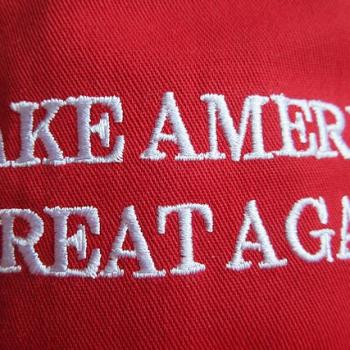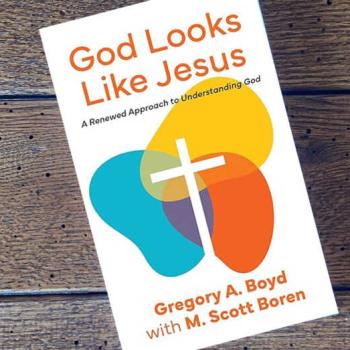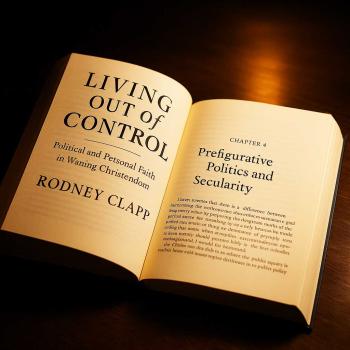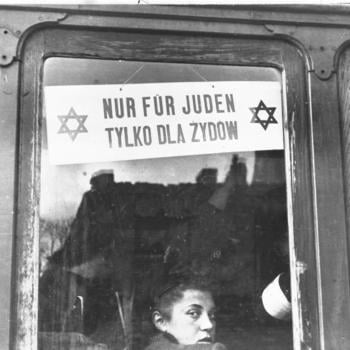Billy Graham as “Pope” of Evangelicalism
Roger E. Olson
*Note: This essay was presented at a symposium of the Institute for the Studies of Religion at Baylor University on November 7, 2018–the 100th anniversary of Billy Graham’s birth. You may respond, but please do not react. Reactionary (negative, hostile) comments will not be approved and will not appear here in the comments section. (Also, I am not including a picture here because there are few, if any, in the public domain. Everyone knows what he looked like anyway.)
I begin with some necessary qualifications. First, by no means did Billy Graham consider himself anything like a “pontiff” of the evangelical movement or of anything else. He was one of the most humble, self-effacing of men and never aspired to infallibility or even authority. So when I describe him as “pope” of evangelicalism I am talking about how he functioned within the post-fundamentalist, post-World War 2 American evangelical coalition-movement—in spite of his own intentions and aspirations (or lack of them).
Second, by “evangelicalism” I mean that coalition of mostly American (and by extension British and other) conservative Protestant Christians who considered themselves neither fundamentalist nor liberal and who valued the Bible as uniquely inspired and authoritative as God’s Word written and who came together especially in the 1940s through the 1960s to provide a trans-denominational support group as a kind of “third way” in American Protestantism. This evangelical movement was held loosely together by certain institutions and organizations such as Christianity Today, Inc., the Coalition of Christian Colleges and Universities, and the National Association of Evangelicals.
My point, however, is that no binding power in this coalition was stronger than the personality of Billy Graham and the influence of his “empire” of organizations which included Christianity Today of which he served as Chairman of the Board for many years. Billy Graham was the “glue” that held this post-World War 2, post-fundamentalist evangelical coalition and movement together. Notably upon his deep retirement in the late 1990s the movement began to disintegrate. I consider it now gone.
So with what authority do I talk about Billy Graham? I never met him. I have read several biographies of him but feel especially informed by his own autobiography Just As I Am which I reviewed in a lengthy article at the request of the Minneapolis Star Tribune. My uncle who served as president of our Pentecostal denomination for twenty-five years was on the national board of the NAE and knew Billy Graham personally. I served on the editorial board of Christianity Today, first as consulting editor and then finally as contributing editor for many years and I had many occasions to speak at length with CT’s editors including especially David Neff and Mark Galli. I once asked a managing editor of CT what it was like to edit a magazine whose Chairman of the Board was Billy Graham. He responded that it was like living in a house with a nine hundred pound gorilla in the living room. He wasn’t comparing Billy Graham’s character to that of a gorilla; he only meant that they, the editors, had to always consider what Billy Graham would think before publishing anything even slightly controversial.
Admittedly my claim about Billy Graham’s role in evangelicalism is impressionistic and anecdotal, but I think it is nevertheless accurate.
To put it bluntly, its seems to me that for about thirty to forty years evangelical leaders, especially, defined their movement by reference to Billy Graham; he functioned as the figure head leader of the movement with such power of influence and example that whichever way he moved on any issue became the norm. He functioned as the almost universally acknowledged “gold standard” of evangelical leadership.
This function extended beyond character and ethics into evangelical theology. Of course I am not claiming that Billy Graham was a theologian per se, but my claim is that his posture toward and in relation to doctrines set a standard and norm for theological specificity and generality. Put otherwise, throughout the 1950s and into the 1970s, at least, “movement evangelicals” were by and large willing to set aside denominational particularities or at least relativize them while holding firmly to broad, evangelical orthodoxy as modeled by Graham and his representatives. I know for a fact that many evangelical leaders, when confronted with a theological question asked themselves “What would Billy Graham say?” That was especially true when it came to what innovations in theology could be tolerated.
I could go on a very long time with this case for Billy Graham as the “evangelical pope” (by default, not intention). But my time is very limited so let me offer a couple of clear illustrations from my own memory.
I will never forget the impact of Billy Graham’s journey to Oral Roberts University to deliver the sermon at its dedication in 1967. We Pentecostals were not sure of our “place” among evangelicals and many evangelicals were not sure of it either. When Billy Graham did that he implicitly put a “Good Housekeeping Seal of Approval” on Pentecostalism as full part of the evangelical movement. That was at a time when Oral Roberts was still Pentecostal, before he became United Methodist and then independent charismatic. Suddenly most non-fundamentalist evangelicals dropped their concerns about whether trinitarian Pentecostals are evangelicals.
I will also never forget the impact of Billy Graham’s implicit endorsement of the Jesus People Movement in the early 1970s. Many evangelicals had serious qualms about the so-called “Jesus Freaks” until Billy Graham grew his hair long and started showing up at Jesus People festivals and inviting noted Jesus Freaks like Arthur Blessitt to meet with him and even participate in his crusades such as the one in Northern Ireland in 1971. Billy Graham’s embrace of the Jesus People Movement convinced many wary evangelicals to look upon it more favorably than otherwise.
I think those two examples well illustrate how highly evangelical leaders of various Protestant traditions regarded Billy Graham and how he perhaps unintentionally and over time contributed by his example to a kind of genericizing of American evangelicalism in which denominational theological and ethical particularities took “back seat” to a kind of broad “theology of salvation” that could legitimately find many expressions.
Now, let me end this by switching metaphors. It seems to me that Billy Graham was to post-World War 2, post-fundamentalist evangelicalism what Martin Luther King, Jr. was to the 1950s through 1970s Civil Rights Movement. There was, as we all know, real diversity within the Civil Rights Movement and yet there was also unity. Martin Luther King, as an icon even after death, provided the unity, not only organizationally but also ideologically by example. That’s what Billy Graham did for mid-to-late twentieth century evangelicalism.












